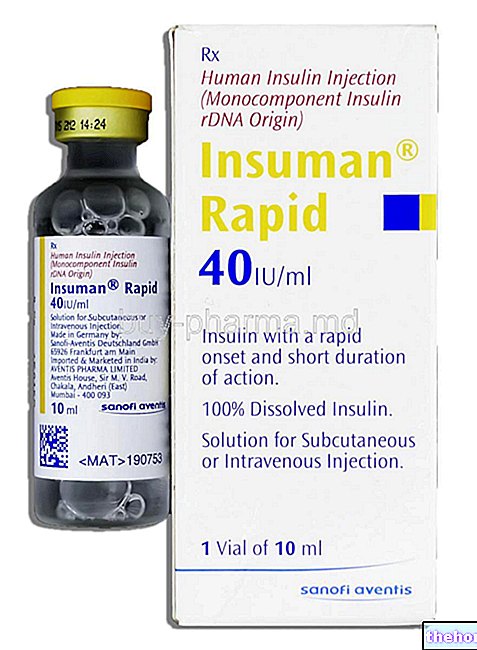
What is Byetta?
Byetta is a solution for injection that contains the active substance exenatide. It is available in ready-to-use pre-filled pens of 5 or 10 micrograms of exenatide per dose.
What is Byetta used for?
Byetta is indicated for the treatment of type 2 diabetes in combination with other antidiabetic medicines (metformin and / or sulphonylurea) in patients whose blood glucose (sugar) levels are not adequately controlled with the maximum tolerated dose of these other medicines. Type 2 diabetes is also known as non-insulin-dependent diabetes.
The medicine can only be obtained with a prescription.
How is Byetta used?
Byetta should be administered by subcutaneous injection into the thigh, abdomen or upper arm using the pre-filled solution for injection pen. The pack contains a user guide.
Byetta therapy should be started with a dose of 5 micrograms twice daily for at least one month; it can subsequently be increased to 10 micrograms twice a day. Doses above 10 micrograms twice daily are not recommended. The first dose should be administered in the hour before the morning meal, the second in the hour before the evening meal. Byetta should never be given after meals. Particular care is needed when Byetta is added to therapy with a sulphonylurea, as there is a risk of hypoglycaemia (low blood sugar levels). This risk is not anticipated when Byetta is added to metformin therapy. Byetta is not recommended in patients with severe renal insufficiency.
Patients being treated with Byetta should continue to follow their diet and exercise regimen. The safety and efficacy of Byetta have not been established in patients below 18 years of age.
How does Byetta work?
Type 2 diabetes is a disease in which the pancreas does not produce enough insulin to control the level of glucose in the blood or where the body is unable to use insulin efficiently. The active substance in Byetta, exenatide, is an 'incretin mimetic'. This means that it works in the same way as incretin, a hormone produced in the intestine, ie it causes an increase in the amount of insulin released by the pancreas in response to ' food intake, thereby helping to control blood glucose levels.
How has Byetta been studied?
Before being studied in humans, the effects of Byetta were tested in experimental models.
Byetta has been the subject of five main studies involving nearly 2,400 patients. In three of these studies, Byetta was compared with placebo (a dummy treatment), as an 'add-on' to metformin (336 patients), sulphonylurea (377 patients) or to both medicines (733 patients).
The other two studies compared adding Byetta or adding an insulin to existing treatment with metformin and sulphonylurea. In one study, Byetta was compared with insulin gl "bank in 456 patients, while in the other study. , Byetta was compared with biphasic insulin in 483 patients.
In all of the studies, the main measure of effectiveness was the change in blood levels of a substance called glycosylated hemoglobin (HbA1c). HbA1c levels give an indication of how well the blood glucose is controlled.
What benefit has Byetta shown during the studies?
Byetta was more effective than placebo in lowering HbA1 levels when used in combination with other antidiabetic medicines. After 30 weeks, the 5 micrograms twice daily dose reduced HbA1c levels from 0.46 to 0.66% and the 10 micrograms twice daily dose reduced these levels from 0.86 to 0. , 91%. The use of the placebo produced little or no benefit.
Byetta was as effective as the injected insulin. The dose of 10 micrograms twice a day of Byetta resulted in a 1.13% reduction in the HbA1c level, compared to 1.10% with the use of insulin gl "argine after six months. In the final study, the dose of 10 micrograms twice daily of Byetta reduced the level of HbA1c by 1.01% after one year, compared to 0.86% recorded with insulin. biphasic.
What are the risks associated with Byetta?
In clinical studies, the most common side effects with Byetta (seen in more than 1 in 10 patients) were hypoglycaemia (when given with a sulphonylurea), nausea, vomiting and diarrhea. For the full list of side effects reported with Byetta, see the package leaflet.
Byetta must not be used in people who may be hypersensitive (allergic) to exenatide or any of the other substances.
Why has Byetta been approved?
The Committee for Medicinal Products for Human Use (CHMP) decided that Byetta's benefits are greater than its risks for the treatment of type 2 diabetes mellitus in combination with metformin and / or sulphonylurea in patients who have not achieved adequate glycemic control with the maximum tolerated dose of such drugs. The Committee recommended the granting of a marketing authorization for Byetta.
Other information about Byetta:
On 20 November 2006, the European Commission issued Eli Lilly Nederland B.V. a "marketing authorization" for Byetta, valid throughout the European Union.
For the full version of Byetta's EPAR, click here.
Last update of this summary: 12-2008.
The information on Byetta - exenatide published on this page may be out of date or incomplete.For a correct use of this information, see the Disclaimer and useful information page.









.jpg)


















